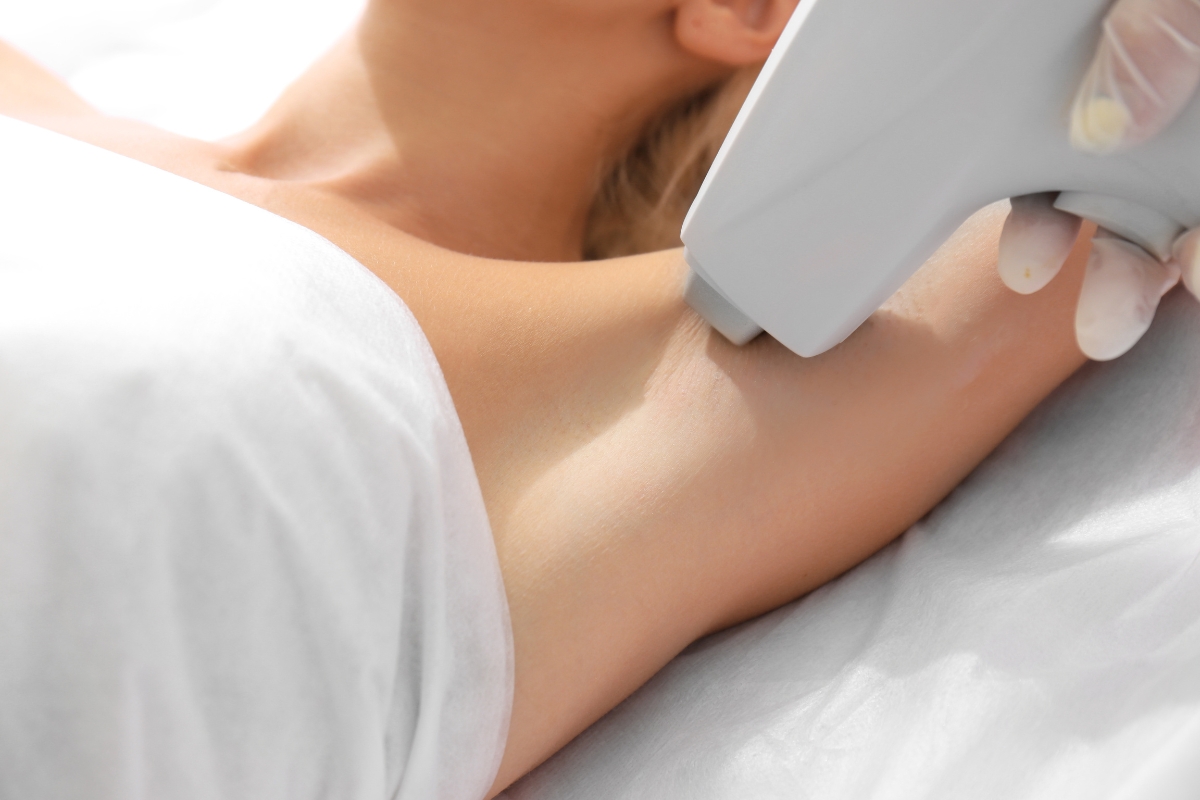About IPL Hair Reduction (Photoepilation)
Unwanted facial and body hair is a common concern. Clinically significant reduction in hair can be achieved for aesthetic as well as medical indications. Although many options for hair removal are available, laser and intense pulsed light (IPL) systems are the best option for long-term hair reduction.
Photoepilation involves the use of intense pulse light (IPL) to remove unwanted hair in both exposed and non-exposed areas of the body. It offers stable, long-term reduction in the number of hairs regrowing after a series of treatments.
IPL hair reduction occurs due to absorption of light by pigment (melanin) in hair follicles. This produces heat that is transferred to nearby stem cells responsible for hair growth. Follicular stem cells are responsible for regenerating hair follicles during the active growth phase of the hair cycle and when heated this mechanism is damaged causing permanent hair reduction.
Men and women who are interested in a safe, fast, and effective method of hair reduction of unwanted hair can benefit from photoepilation. It is most beneficial for dark hair on lighter skin types.
Photoepilation should not be performed on women that are pregnant or breastfeeding. It should also not be performed over areas of active skin infection, tattoos, vitiligo, or psoriasis. Patients on hormonal therapy may experience reduced results. If you experience recurrent viral infections (herpes) in the area of treatment you may require a prescription of antiviral medication to prevent an outbreak.
Photoepilation can be performed anywhere on the body except over areas of active skin infection, tattoos, psoriasis or vitiligo. Common treatment areas include the legs, underarms, back, face and bikini area.
Laser and IPL hair reduction treatments do not offer permanent complete hair loss. A series of laser or IPL photoepilation treatments offer permanent hair reduction (50-85% reduction), and maintenance treatments may be required. Hair location, skin, and hair colour all can affect treatment outcomes and hair that does regrow tends to be lighter and finer. Light skin with dark hair achieves the best results due to the lack of melanin in the skin and the abundance of melanin in the hair follicles. Certain hormonal conditions may reduce long term hair reduction results.
There will be minimal pain during the procedure. There is a built-in cooling system in the IPL that helps to minimize pain and swelling. Cold packs are also used to help cool the skin. Occasionally numbing cream may be applied before treatment to make the procedure more comfortable.
All methods of hair reduction have side effects. Side effects of photoepilation can be minimized when the correct patient selection, energy settings, and wavelengths are used. There will be minimal pain during the procedure and the skin will appear red and a bit swollen after treatment. You may also experience itching or burning of the skin after treatment. Unwanted side effects include pigmentation changes, bruising, burns, blisters, crusting, and scarring.
Paradoxical increased hair growth may rarely occur in some patients. Some pigmentation changes can be permanent, so it is important to follow all post procedure instructions. Most complications are preventable when adequate precautions are taken, and it is important to see a trained professional to carry out this procedure.
Before photoepilation it is important that the area is not tanned and that you are using sunscreen on exposed areas for 4-6 weeks before undergoing treatment. Discontinue any self tanning products one week before treatment. You must avoid bleaching, plucking, waxing, electrolysis, using hair removal creams, or sugaring for 6 weeks before treatment. Do not use any retinol products (products containing tretinoin), acids (glycolic, lactic, salicylic, vitamin C) or exfoliants on the area to be treated for 5 days prior to treatment.
Photosensitizing medications including doxycycline and minocycline should be discontinued three days prior to the treatment. You should shave the area the night before the procedure.
The treated area can be washed normally with mild soap and water. Wash the area gently, do not use a washcloth or other abrasive instrument.
Strict sun and tanning bed avoidance for 4 -6 weeks is important to minimize risk of pigmentation changes. Daily use of a broad-spectrum sunscreen of SPF 30 or greater for 4-6 weeks after treatment is needed. Do not exercise until all redness in the area has resolved. No Jacuzzis, saunas, or steam baths until the skin is back to normal.
Hair follicle stem cells are only affected when they are in the growth phase of the hair cycle. As not all follicles are in the growth phase at once, multiple treatments are necessary to ensure that all hair follicles are treated. Initially 5-6 treatments are required spaced 4-8 weeks apart to achieve results. In areas of dense hair growth more treatments may be required. Maintenance treatments may be required every 6-12 months as fine hairs grow back.
